Barberry is one of the brightest representatives of unpretentious and long-lived shrubs that can not only bring tasty fruits, but also participate in the landscape design of the countryside.
They are distinguished by straight prickly branches. In some species the spines grow to a centimeter size. In a young plant, the branches are thin and the bush has a loose constitution, but only after a couple of years it will grow so much and “stiffen”, which will become an absolutely impassable barrier.

Sheared barberry bushes decorate the site
Adult barberry can reach a height of three meters, but the group has varieties that do not grow above 30. The shrub is easy to cut and this has made it not only the best choice for hedges, but also for the embodiment of topiary ideas.
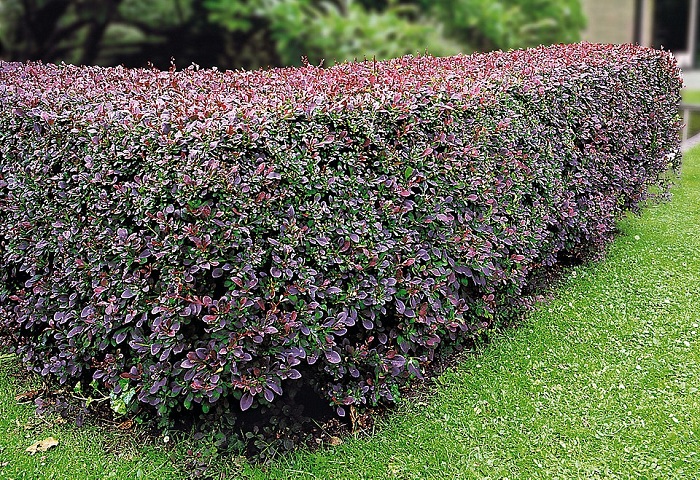
A hedge of barberry bushes
Barbaris in landscape design
Bushes barberry the best way of registration:
1. Frames of lawns.

Low barberry bushes frame the lawn
2. Japanese gardens.

Bright bush barberry organically fit into the composition of the Japanese garden
3. The hedgerows.
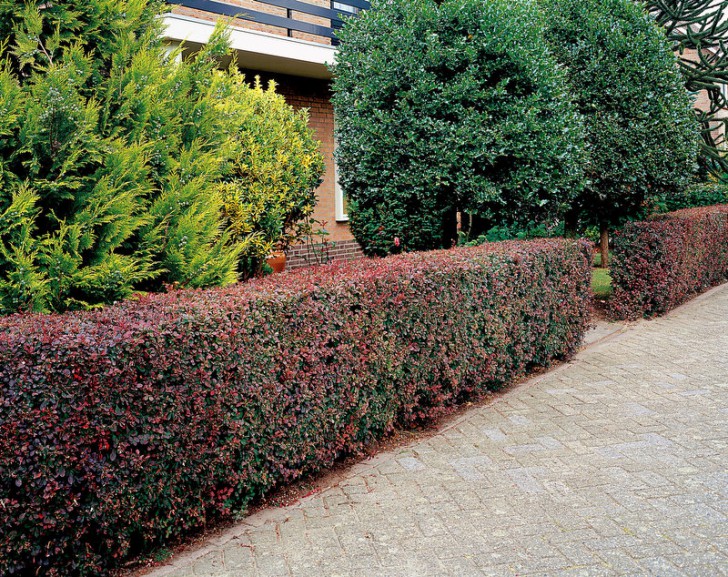
The hedgerow from barberry
4. Alpine hills.
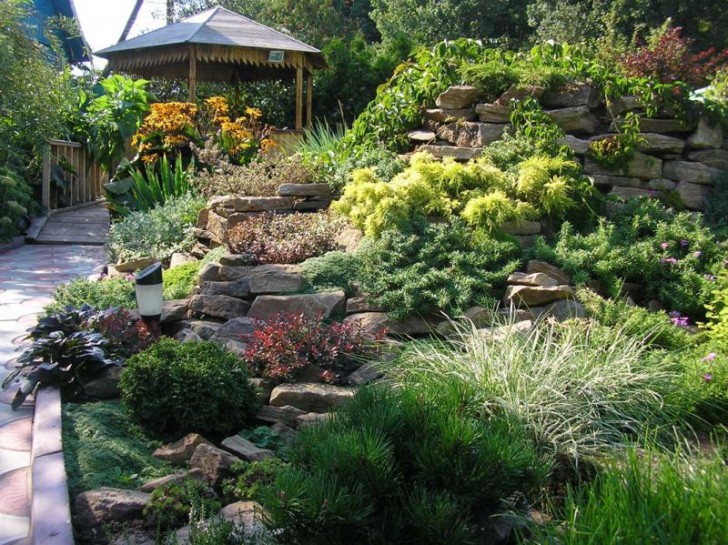
Low grades of barberry are suitable for making alpine slides
This is largely due to the extensive color palette of the plant. Barberry can have a yellow-red, violet-blue or red-green color. By combining the color varieties of barberry with other types of shrubs you can get just luxurious compositions. Barbaris can act in this case, both the main background and the accent zone.

Bright purple barberry for accent zone
Dwarf varieties are used to design the perimeter of flower beds. The bush will perfectly cope with the task of protecting against trampling of flowers and grass growing on them. Sometimes the hosts enclose the barberry hedge around the trees. It turns out a very picturesque picture.
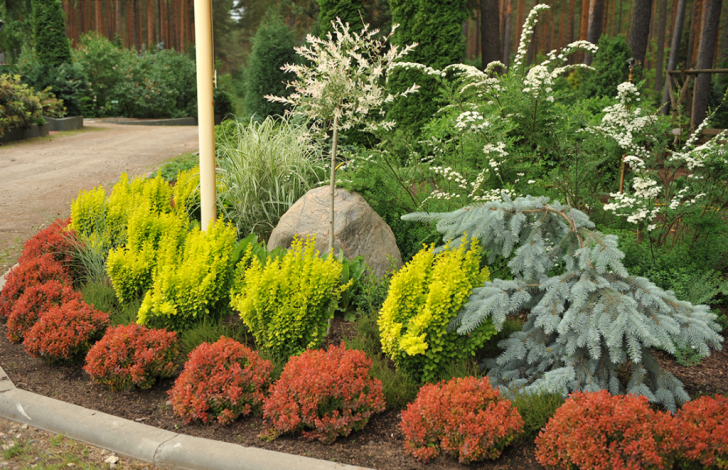
Dwarf barberry can be planted along the perimeter of the flower bed
When planting barberry with a hedge hedge, you can take care of it in different ways. Someone prefers to leave the bushes in their original form, but someone likes beautifully cut “fences”. It is best to keep the shape of barberry with straight branches. They are not difficult to form a rounded composition.
Rules for planting barberry
The most important thing when planting a barberry bush is not to plant it near groundwater. The plant does not tolerate an excess of moisture, so in the lowlands the seedlings are not planted. Land for planting should be perfectly drained and, of course, fertile. If your site has excessively acidic soil, then it will have to be lime, moreover, in each prepared landing hole you will need to add a little bit of sand. This will increase the aeration.
He does not like barberry and a thick shadow. In this situation, the bush will lose its unusual color and will not bear fruit, so take the plant a well-lit area of the territory.
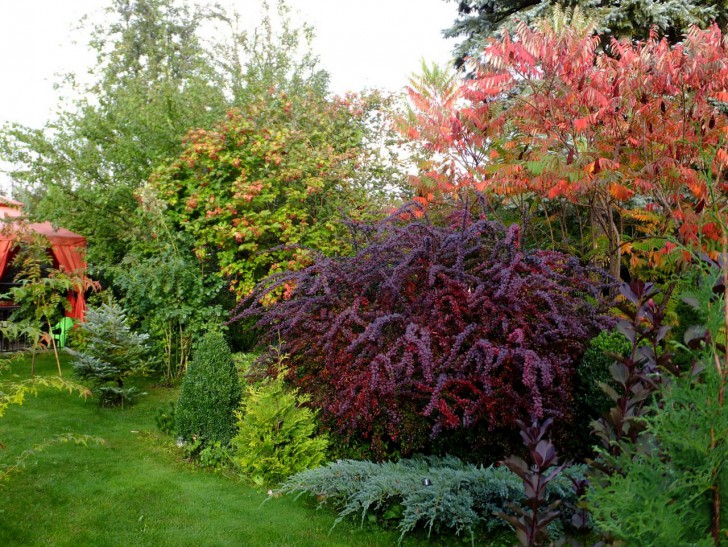
Barberry is best planted in a well-lit area
When growing any plant requires some effort, and barberry, for all its unpretentiousness, will not be an exception. There will not be any special requirements, but some points are also important for him.
How to get a seedling
“It is better for an aspiring gardener to buy a strong seedling, because it will take a lot of time with the seeds, and may not yield the expected results”
Cuttings and seeds are suitable for obtaining seedlings. You can propagate bushes by dividing and layering. It is better for an aspiring gardener to buy a strong seedling, because it will take a lot of time with the seeds, and may not give the expected results.
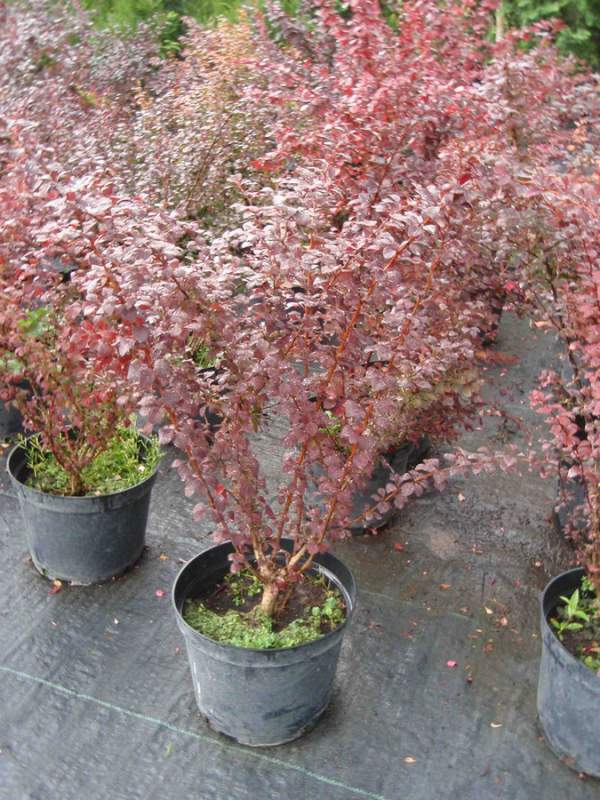
For beginners it is better to buy ready-made barberry seedlings
To reproduce the cuttings, gently cut off the necessary part of the bush and put in the soil or pot. Further planting will need to be watered regularly, and expect the appearance of roots. If the seedling grew in a flowerpot, then, transferring it to the open ground, it is not necessary to pick it out from the potted soil, so as not to damage the fragile rootlets. To propagate by stretching, the shoot must be pinned and sprinkled with earth. The soil in this place is moistened, stimulating the springs to start the horses.
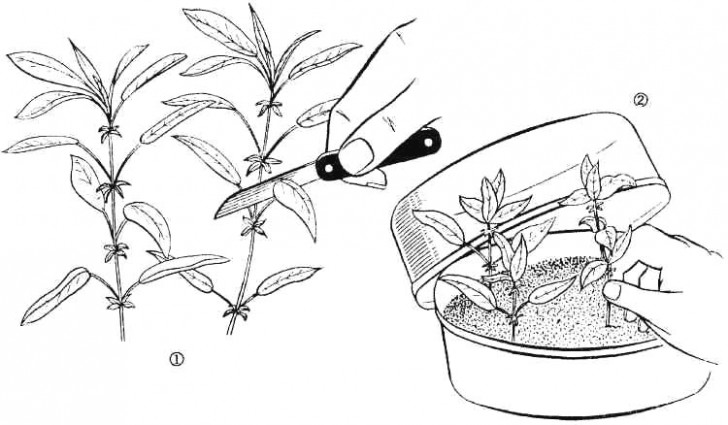
Reproduction of barberry by cuttings
The most convenient way to dilute the thickets of barberry is the division of the bush. The plant is excavated and divided into parts. Each newly formed bush is returned to the ground. Barbaris easily tolerates this procedure, gets well and quickly begins to bear fruit.
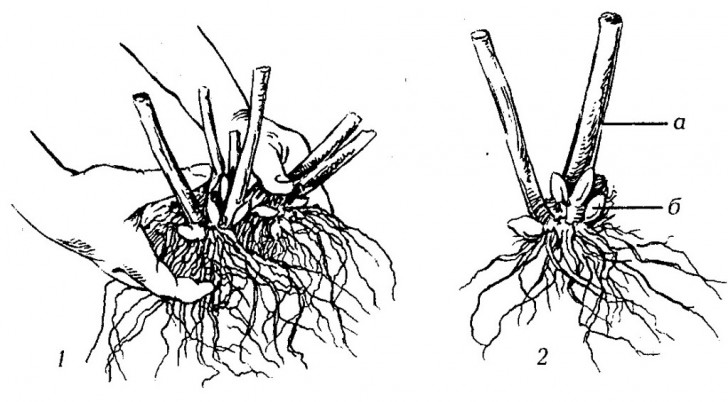
Barberry Barley Division
To plants, the plant is not particularly demanding, but to the place – yes. It should be planted in the sun, in the extreme case – in the penumbra. A solitary bush is prepared with a pit of half a cubic meter in size. For a hedge, it is more advantageous to dig a trench rather than pits. In the prepared place, drainage is arranged, the soil is moistened well and fertilizers are added to it.
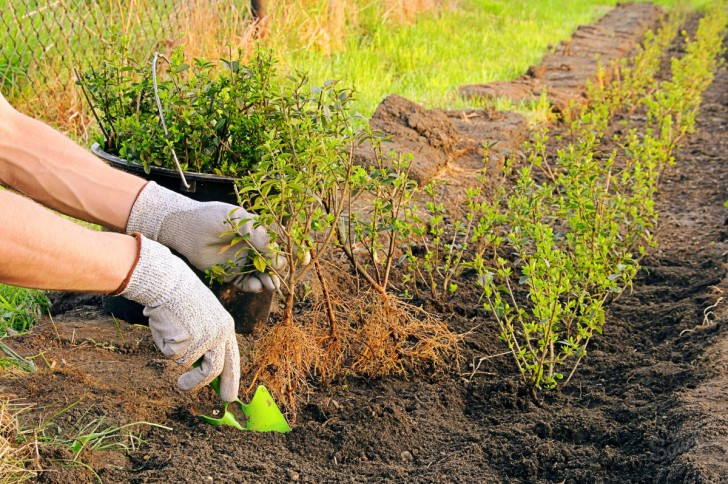
Before planting a hedge from barberry, it is necessary to dig a trench
Suitable for:
1. Peat.
2. Humus.
3. Superphosphate.
The drainage can be taken:
1. Sawdust.
2. Crushed stone.
3. Leaves.
After all these procedures, the landing site can be considered ready.
When to plant
The time of planting will depend on the variety of the seedling and its type. So, a seedling with an open root system is transferred to the soil in the early spring, while the kidneys are asleep. In this case, the bush will quickly take root and will not be stunted afterwards. You can plant barberry in the autumn, in September. The bush will have enough time to cool down for survival.
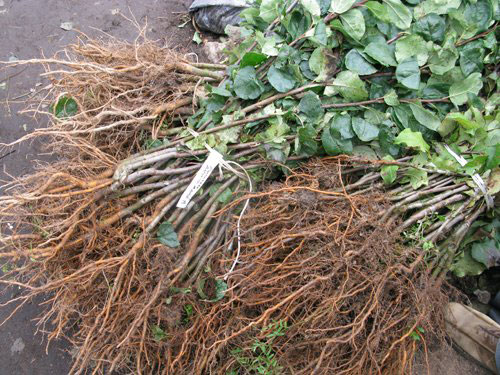
Saplings with open root system
Plants from containers are planted without looking back at such nuances, here the main thing is not to do this in the frying pan. And after planting the first time the seedlings will have to be covered from the sun’s rays.
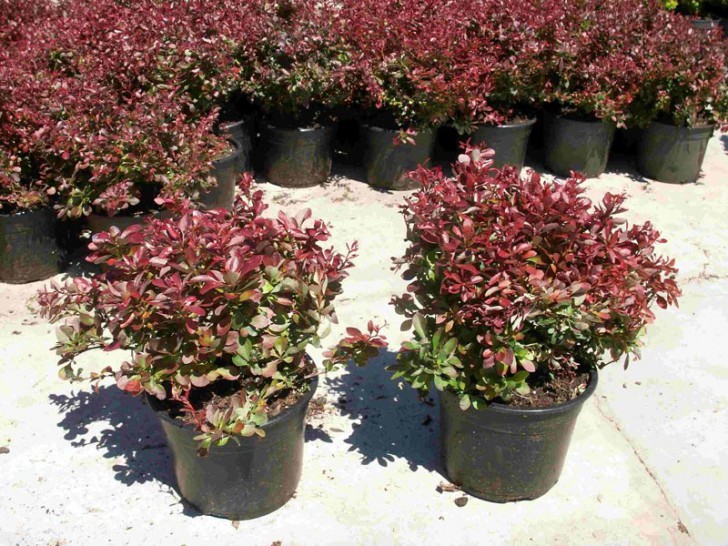
Barberry seedlings in containers
Additional fertilizing
The application of fertilizers to such bushes as barberry is required once in several years. Experts argue that this is enough to stimulate the plant and allow it to feel great. If you are going to feed plants in the spring, then you will need nitrogen fertilizers.
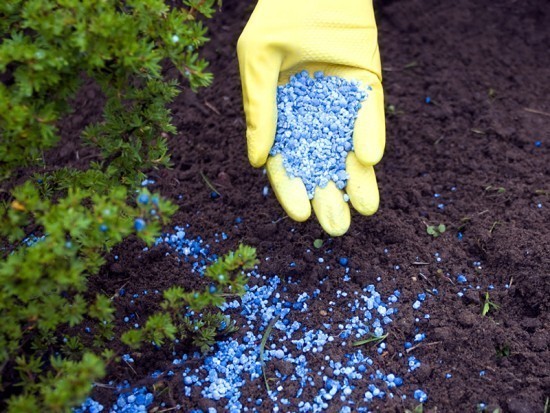
In the early spring barberry is fed with nitrogenous fertilizers
For organic and phosphate-potassium substances, fall is more suitable.
Care instructions
Barbaris refers to plants that do not need care at all, and after properly organized planting about it in general, in principle, you can forget. However, if you want to get a truly decorative and abundant fruiting bush, then you will still have to deal with barbaris.
In the second year of life, the plant needs to be given top dressing. He will need potash and nitrogen fertilizers in the spring and superphosphate fertilizing – closer to the autumn.

In autumn barberry is fed with superphosphate fertilizers
Barberry is considered a fast-growing shrub, so he needs regular pruning. It will be necessary to remove the thickening bushes of the central branches. Although the plant is also referred to as frost-resistant, nevertheless, in our harsh conditions it may not survive. In this case, in the spring it is necessary to remove also the branches damaged by a frost. To prevent damage to the bush, the first years of it cover for the winter burlap.

Barberry needs regular pruning
Like any living plant, barberry is also susceptible to pests and diseases. If such problems occur, appropriate processing should be carried out. Strongly affected areas are better to work out radically, that is, cut sick branches and burn them. Do not worry, even after seemingly extremely rigid pruning, the bush will quickly restore its splendor. From aphids and flower moths barberries are rescued by 0.2% phytohorm, powdery dew is excreted by foundation, and such unpleasantness as rust is eliminated by a one-percent Bordeaux liquid.
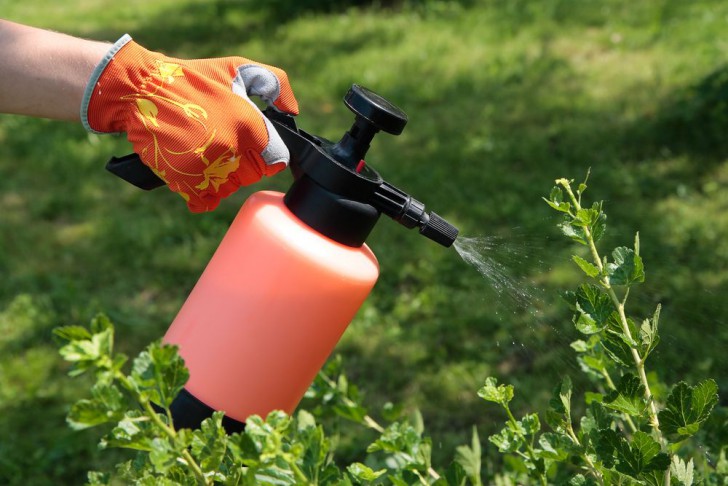
When pests appear, bushes need to be processed
There are several nuances in growing barberry that you need to know about:
- Collection varieties should be sheltered for the winter.
- Barberry is a melliferous and, therefore, has a pronounced flavor, so it is not necessary to allocate a territory near the house under its planting.
- Work with shrubs in durable gloves. Its thorns can seriously injure.
- Plant watering is carried out only during periods of prolonged drought. This is done no more than three times a week.
- The dried branches should be removed immediately.
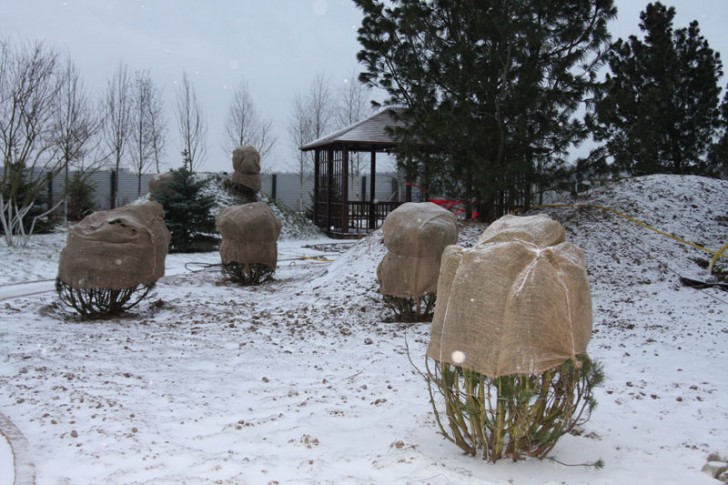
Rare barberry varieties harbor for the winter
Autumn work
At this time, it is good to transplant the finished seedlings to the place of permanent growth. It is necessary to dig up the soil near the bushes and remove vegetative debris from them. If the time has come, the plants are fed with compost and humus. Also before the winter check the landing for the presence of sick branches and remove them.
Rules for pruning barberry
Pruning plants can be:
1. Sanitary.
2. Decorative.
Sanitary cleaning is performed regularly. Its goal – to save the bush from the sick, dry, thinned branches, as well as simply thinning the crown of the plant in case of its excessive thickening. It should be ensured that the new shoots grow long and powerful, this will affect the flowering power and affect the fruit bearing.
If the pruning was performed due to some disease, all the removed parts (affected shoots, leaves) are necessarily burned.
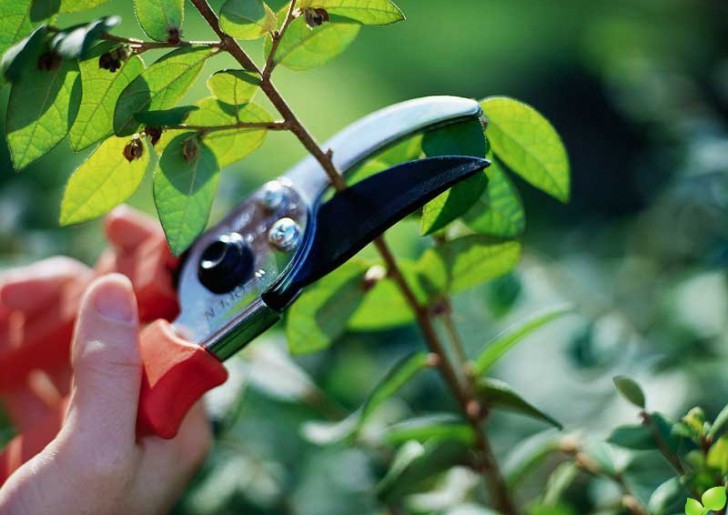
When sanitary pruning, the affected parts of barberry are burned
Decorative pruning is performed on healthy lushly growing bushes. They are given the appearance of various figures and even sculptural compositions.

With decorative pruning, barberry bushes can be given any shape
Features of bush formation
Crown barberry and itself perfectly folds, so you just need to adjust the number of branches in it. The number of shoots left will depend on the purpose of growing the plant. If this is a rich harvest, then with thickening it is worthwhile to fight more actively, in the thickets a lot of berries will not come off. If the bush is only a decorative load, then it should be formed more efficiently. For a hedge, for example, the number of branches left will be tens of, depending on the dimensions of the living fence.
The basics of decorative haircuts
Barberry is the only one of the family of shrubs that can retain its effect for a long time after cutting, moreover, it is suitable for creating the most complex curly profiles. This became possible due to the huge variety of plants. The presence of colorful foliage gives the chance to designers to create colorful and picturesque garden compositions from them. It is noteworthy that barberries can be cut at any time, bushes easily tolerate shortening of one- and two-year-old shoots. A regular haircut will provide a hedge of freshly green and a neat look. She will always look neat. In addition, frequent circumcision contributes to the growth of the crown, stimulates the growth of lateral branches and leaves on them.
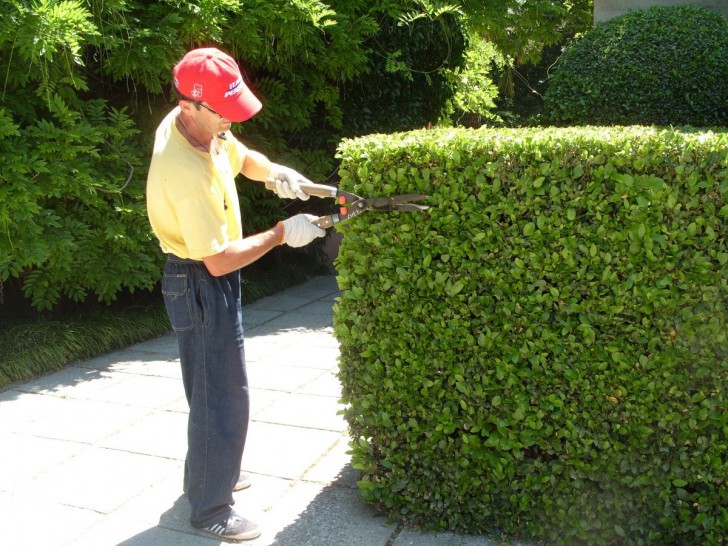
A dense hedge of barberry
Young, newly planted hedges, are sheared for the first two years only once. Gentle haircut is timed to the beginning of spring or the end of autumn. Over the years, the number of haircuts can grow up to 3 times a year.
Haircut is a step-by-step process.
The first step will be pruning plants. Shrubs, the crown of which is poorly formed, is cut into half, in mature plants, branches are cut off by a third. The time of the first pruning is the next season after planting in the ground, that is, the bushes planted in the spring are cut off in the autumn.
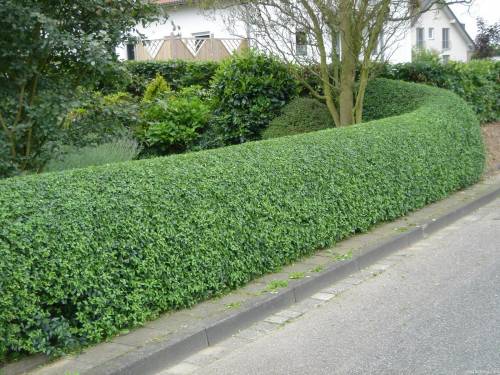
The first cut of bushes is made in autumn
The second stage is the actual formation of the fence. Its goal – to give the bushes a certain profile and thicken the crown. Turning barberry into a hedge, the bushes tend to give a rectangular shape, with regular cuts and flat tops and sides. This will only happen when the hedge height is made wider than the width. Otherwise, the lower shoots will suffer from a lack of light. They will be denuded and die.
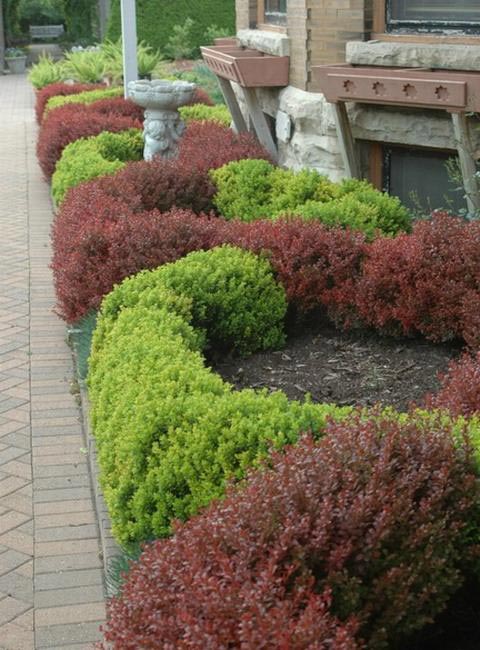
Live fence of two kinds of barberry
Shrub can be cut in a round shape. He is often given a trapezoidal profile with an enlarged base. In these cases, all shoots will be able to develop under conditions of sufficient illumination, and hence the fence will appear well-groomed and beautiful.

Trapezoidal pruning barberry will allow all shoots to develop well
If over the years bushes lose their former attractiveness, then they need to be rejuvenated.
Barberry rejuvenation
“Barberry is revered by landscape designers as a responsiveness to pruning, and for eternal off-season decorative”
When aging, barberry bushes need rejuvenating procedures. They can be performed in different ways. There is an option for carrying out a specific trimming, the task of which is to transfer the load to a more powerful one, located near the bottom of the branch, to escape or cut out the old branch entirely, and instead to form a new shoot.
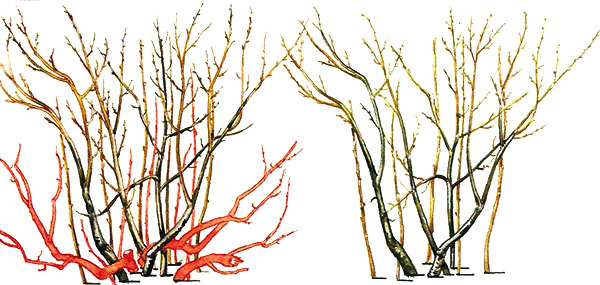
Scheme of pruning for rejuvenation of the barberry bush
It is necessary to rejuvenate in the spring, before the opening of the kidneys. Work neatly, especially if you want to see your bush flowering and fruitful. Good tolerability barberry barrels – this is not an excuse mercilessly to shred him. Remember that only one-year shoots are able to bloom and bear fruit in barberry.
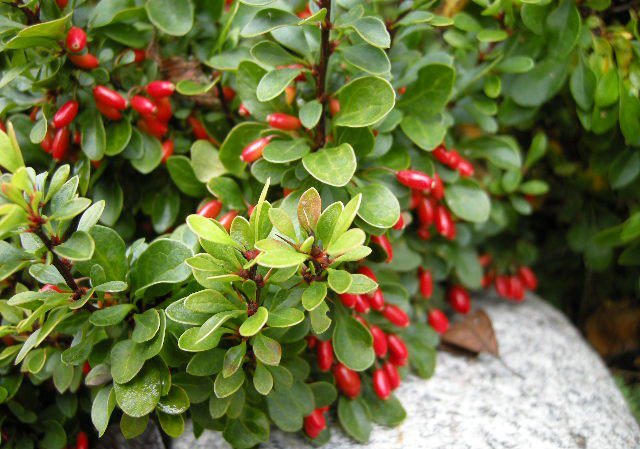
Fruits of barberry
Barberry is revered by landscape designers as a responsiveness to pruning, and for the eternal off-season decorativeness. If everything is done correctly, the bushes will delight you with their picturesqueness all year round. By May they will be covered with small flowers, formed into bunches, and in summer they will be pleased with the luscious greens of glossy foliage. In the autumn, barberry will change the green color of the crown to crimson and will please with bright bunches of berries, which hang on it until the very spring. Just imagine how picturesque this fence will be in the frame of the snow cover.
Instruments
To handle the barberry bush unprocessively, you need to have the appropriate tools. For cutting young shoots it is better to use a hand tool. Appropriate pruners and garden shears. After their use on the branches, there is almost no damaged leaves, which will eventually turn yellow and fall off, and the haircut itself can be performed with the utmost precision and thoroughness.
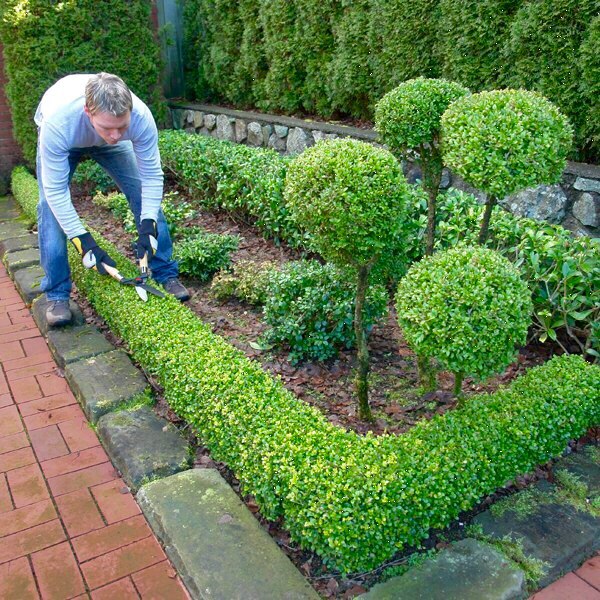
Barberry cutting with garden scissors
In more mature plants, the crowns are cut by brush cutters, chainsaws, and electric scissors. It is important, when preparing electric tools for work, to check the quality of sharpening of cutting elements. Well, at the right angle sharpened blades, will save you from the appearance of branches with splittings on the ends.
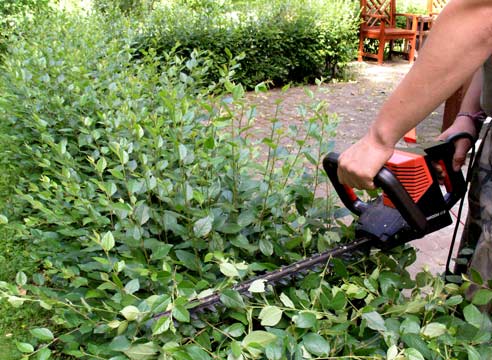
Electric brushcutter suitable for cutting more mature plants
To make the line of the fence smooth, you can resort to all sorts of auxiliary devices. For example, it is convenient to cut the edges by a tight cord. To form a fence, you can use a brightly painted wire frame. He is put on top of the bushes and cut off all the shoots that protrude beyond his borders.
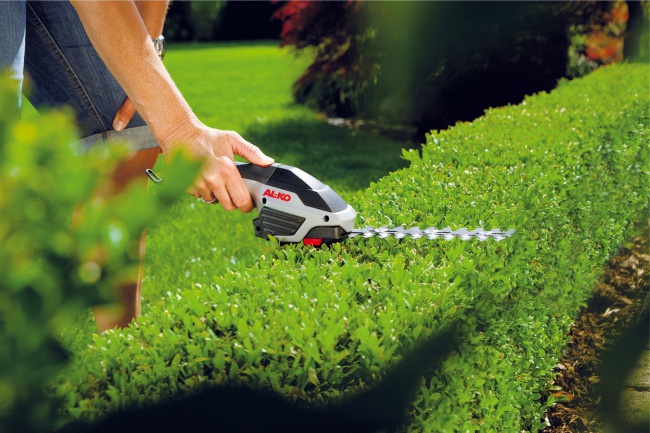
For smooth cutting the bushes can pull the cord
Conclusion
Such highly decorative plant as barberry will give your site an originality and make its appearance extraordinarily aesthetic, and, as you understand, without much effort on your part, so if you still have not got such a miracle in the local area, then it’s time to do it.
Photo Gallery – barberry
Video
Author: Mikhail Bond



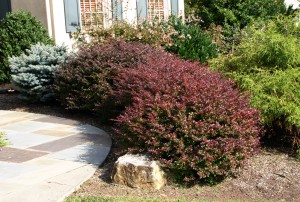
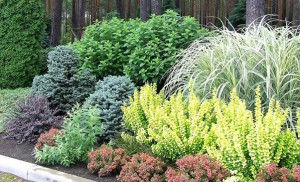
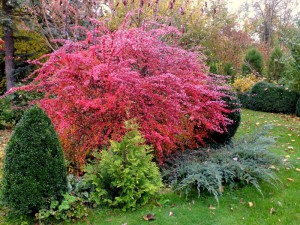
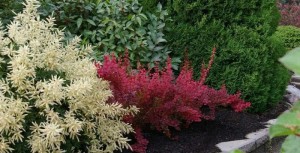


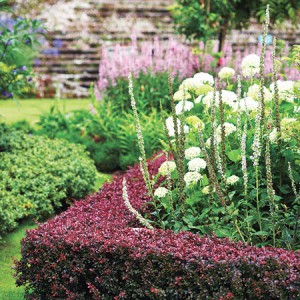
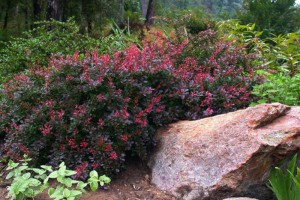




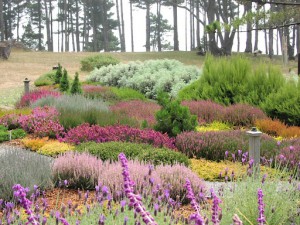

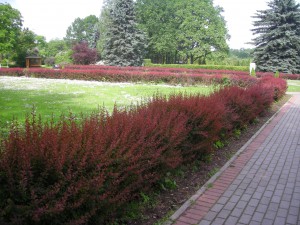
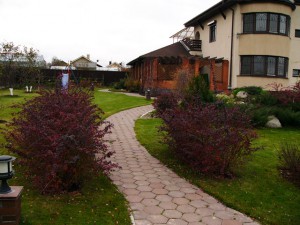
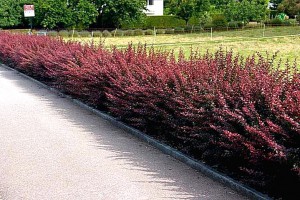
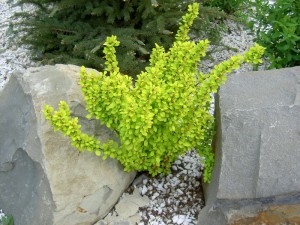

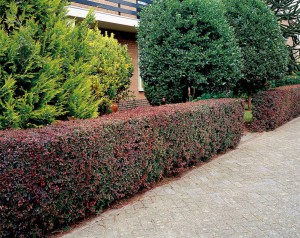

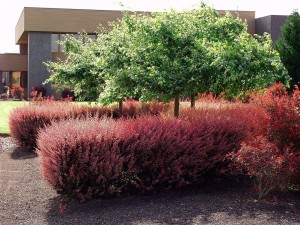
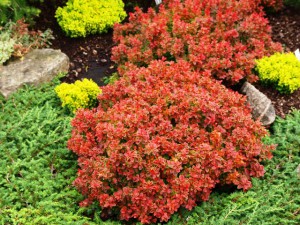
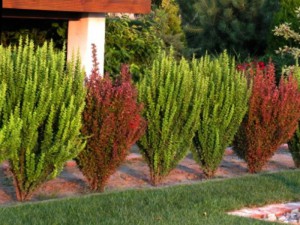
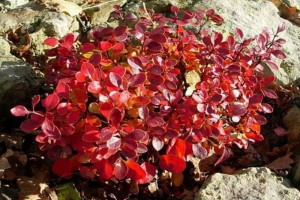
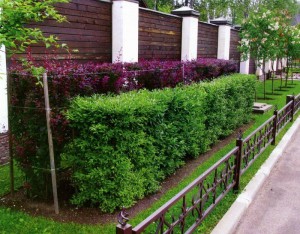






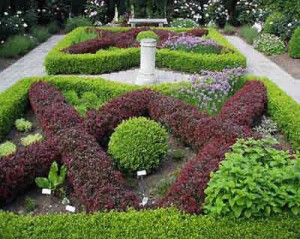
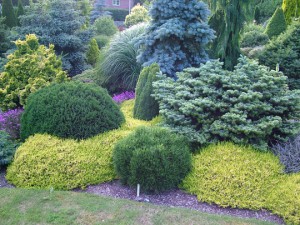
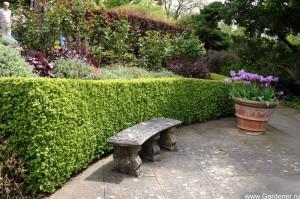
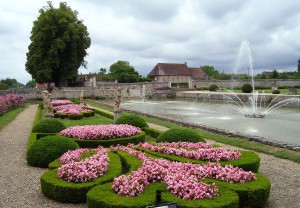

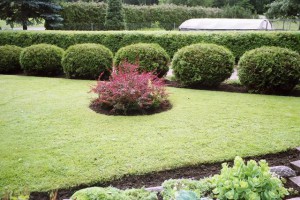

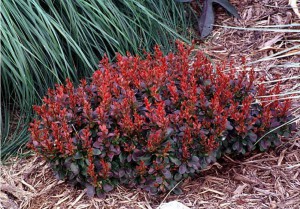
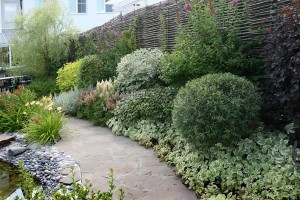
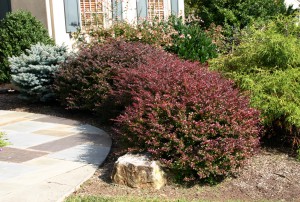
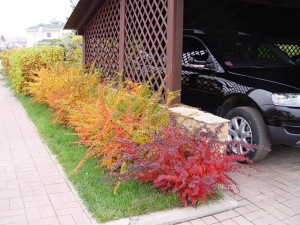
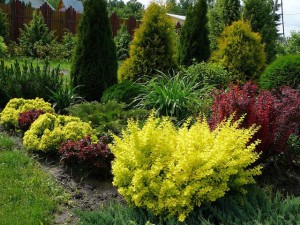

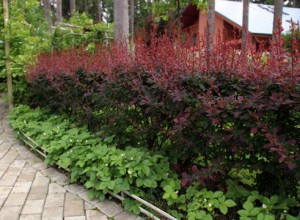
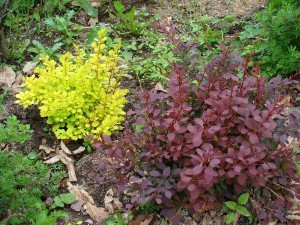
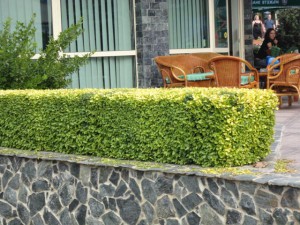
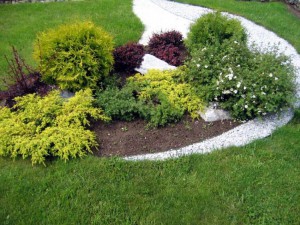
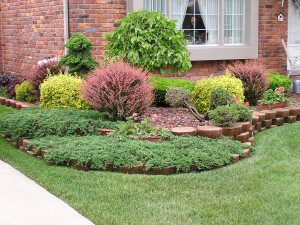
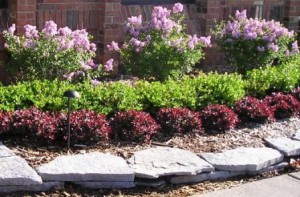
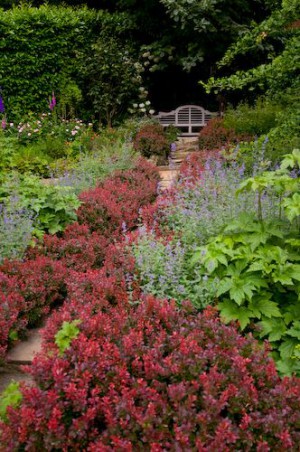
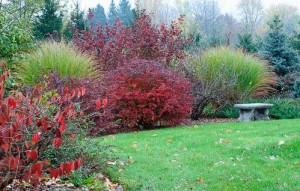
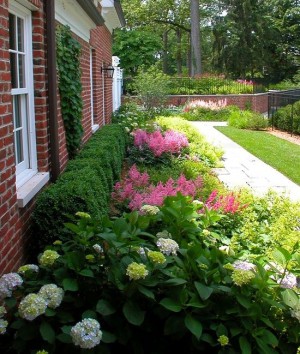
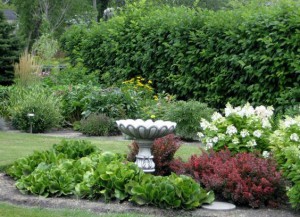
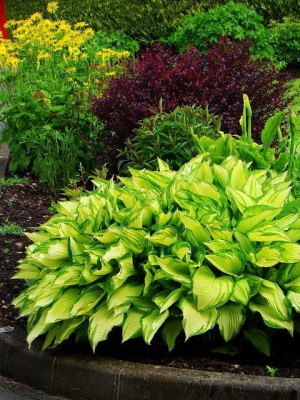
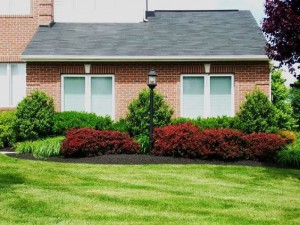



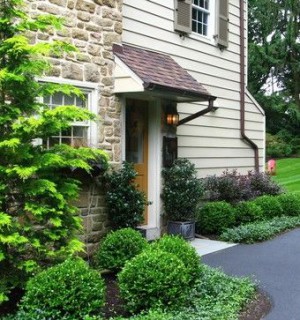

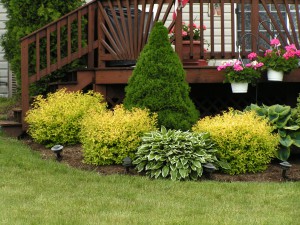

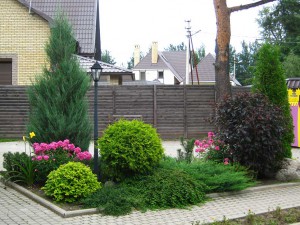
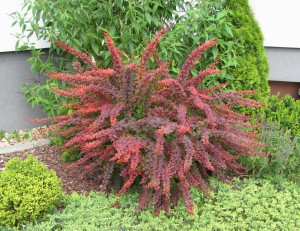
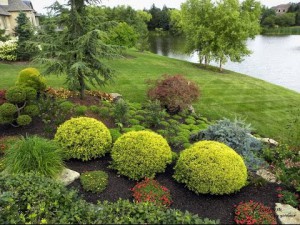
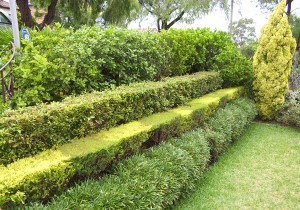
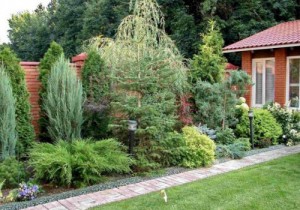

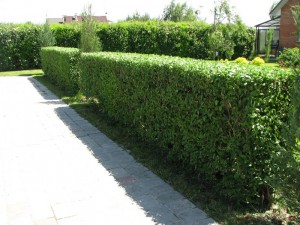
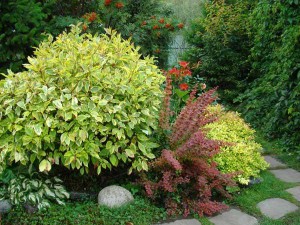


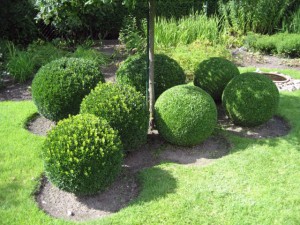
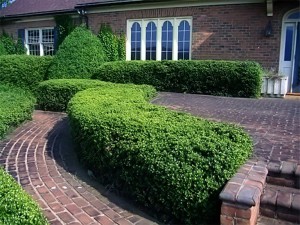

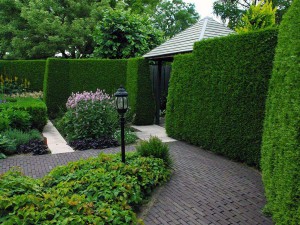
05.05.2023 @ 17:43
Russian:
Барбарис – один из ярких представителей неприхотливых и долгоживущих кустарников, которые могут не только приносить вкусные плоды, но и участвовать в ландшафтном дизайне загородного участка. Они отличаются прямыми колючими ветвями. В некоторых видах шипы достигают размера сантиметра. В молодом растении ветви тонкие, а куст имеет свободную конструкцию, но только через пару лет он вырастет настолько и “затвердеет”, что станет абсолютно непроходимым барьером.
Стриженые кустарники барбариса украшают участок. Взрослый барбарис может достигать высоты трех метров, но в группе есть сорта, которые не растут выше 30. Куст легко стрижется, и это сделало его не только лучшим выбором для живых изгородей, но и для воплощения идей топиария.
Это во многом связано с обширной палитрой цветов растения. Барбарис может иметь желто-красный, фиолетово-синий или красно-зеленый цвет. Комбинируя цветовые разновидности барбариса с другими видами кустарников, можно получить просто роскошные композиции. Барбарис может выступать в этом случае как основной фон, так и акцентная зона.
Кар